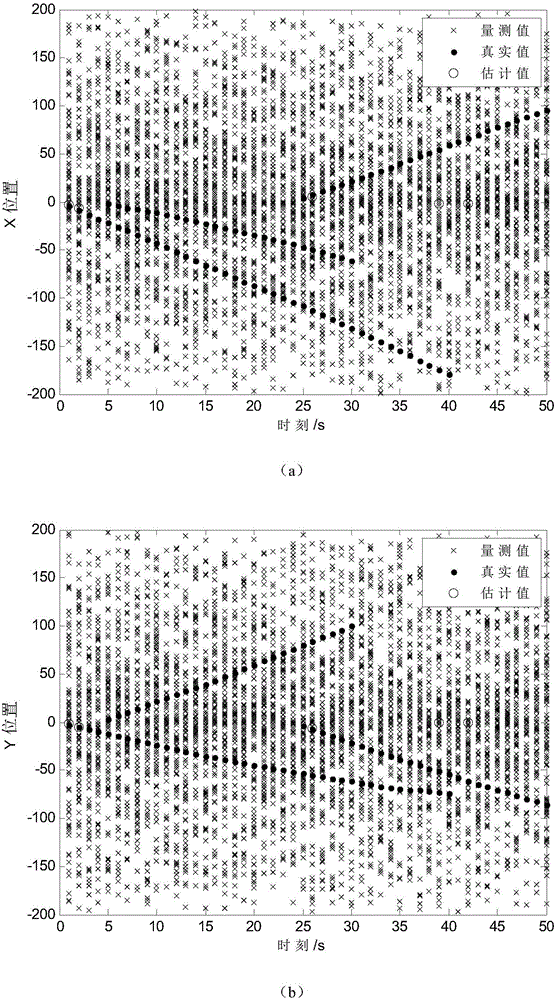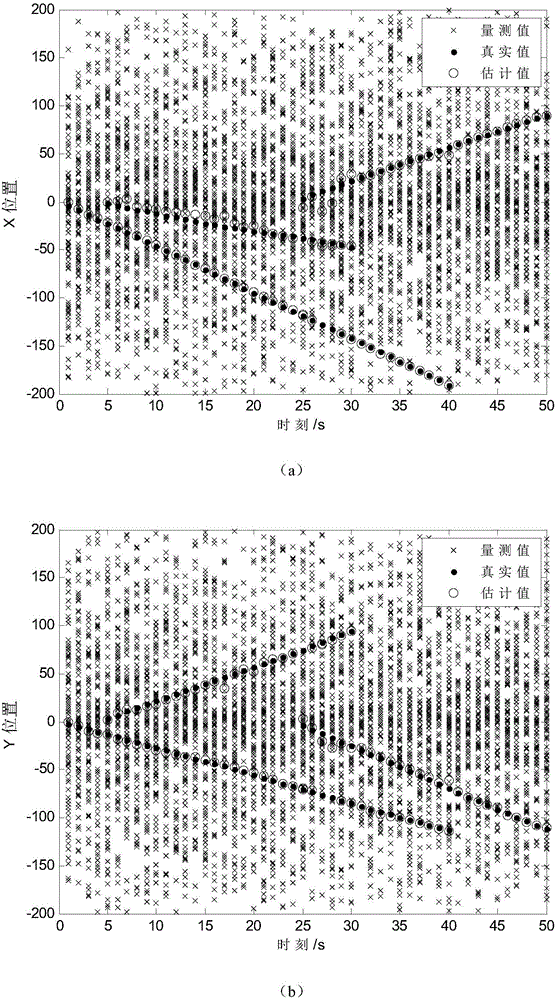AI-PHD filter under unknown signal-to-noise ratio
A technology with unknown conditions and signal-to-noise ratio, applied in instruments, radio wave measurement systems, radio wave reflection/re-radiation, etc. It can solve the problem of inability to target RCS estimation, PHD filtering that does not make full use of target measurement information, and is difficult to adapt to dense Clutter environment, etc.
- Summary
- Abstract
- Description
- Claims
- Application Information
AI Technical Summary
Problems solved by technology
Method used
Image
Examples
Embodiment Construction
[0094] The AI-PHD filter under unknown conditions of the present invention will be described in detail below in conjunction with the accompanying drawings.
[0095] Without loss of generality, assuming that at any moment, the target moves in the two-dimensional observation area of S=[-200,200]×[-200,200], and the target can appear and disappear randomly in this area, the total simulation time is K= 50s, sampling interval T=1s; the initial appearance of the target obeys the Poisson model, and its density function γ k (x)=0.2N(x|x 0 ,Q b ), N(·|x 0 ,Q b ) means that the mean is x 0 , the covariance is Q b Gaussian distribution, where x 0 =[0 2 0 - 2] T and Q b =diag([10 5 10 5]), the minimum signal-to-noise ratio SNR possible for the target min =10dB, the possible maximum signal-to-noise ratio SNR max =40dB, its echo obeys the Swerling fluctuation model; the radar is located at point (0,-100), which can provide the distance R of the target k , Azimuth θ k and ampli...
PUM
 Login to View More
Login to View More Abstract
Description
Claims
Application Information
 Login to View More
Login to View More - R&D
- Intellectual Property
- Life Sciences
- Materials
- Tech Scout
- Unparalleled Data Quality
- Higher Quality Content
- 60% Fewer Hallucinations
Browse by: Latest US Patents, China's latest patents, Technical Efficacy Thesaurus, Application Domain, Technology Topic, Popular Technical Reports.
© 2025 PatSnap. All rights reserved.Legal|Privacy policy|Modern Slavery Act Transparency Statement|Sitemap|About US| Contact US: help@patsnap.com



